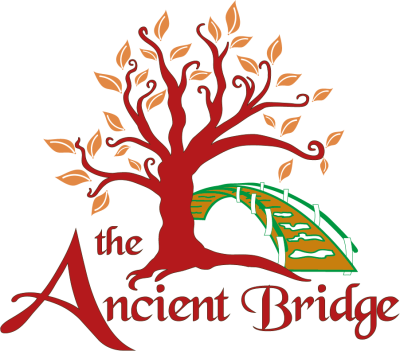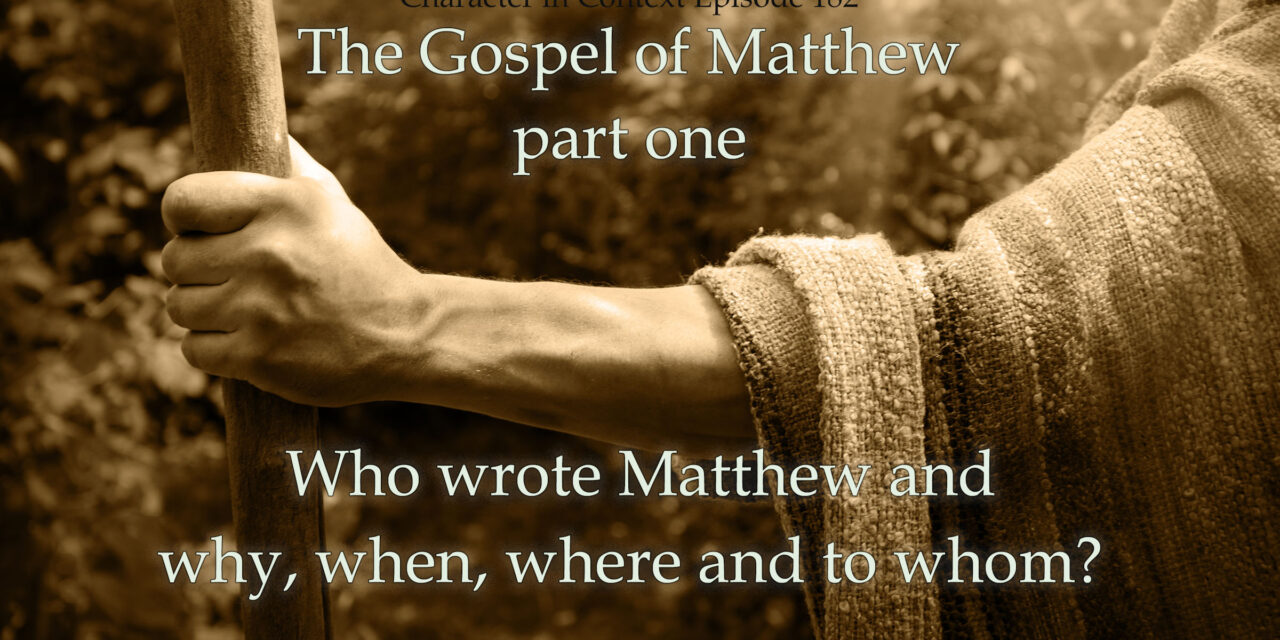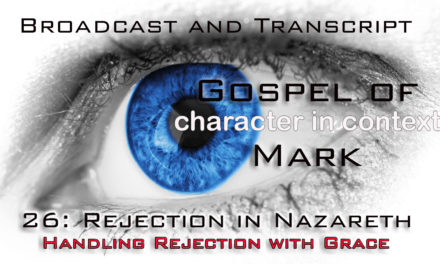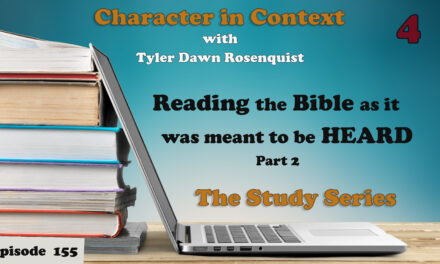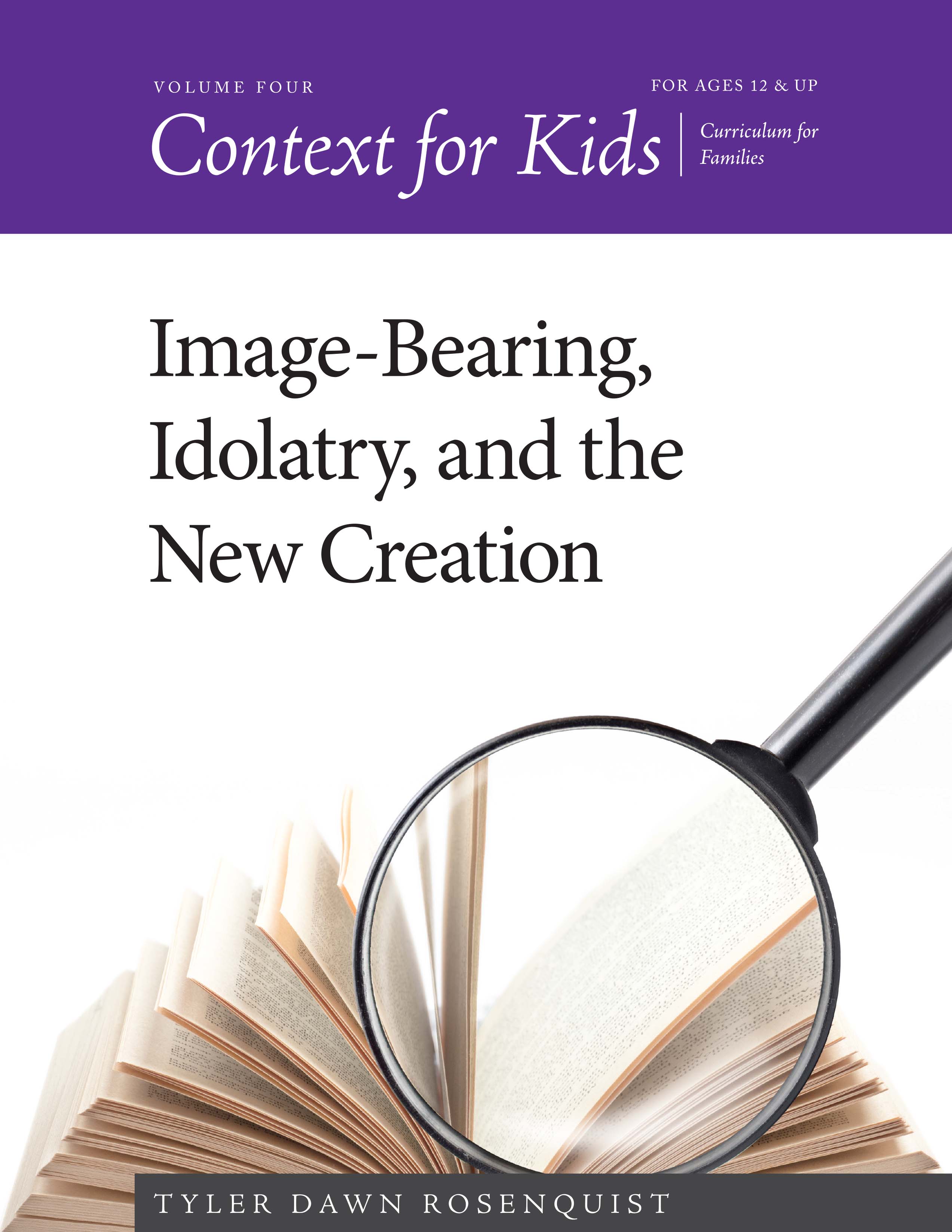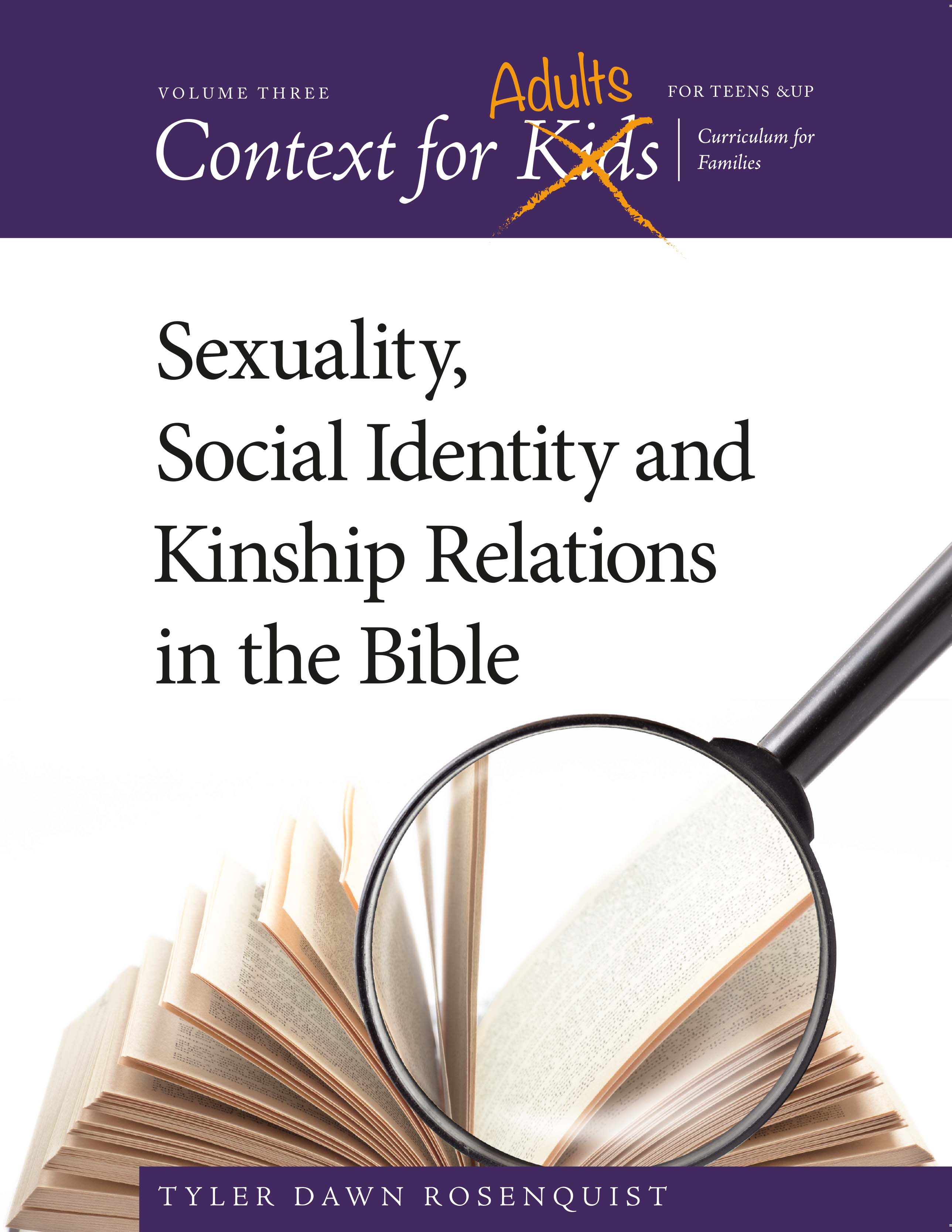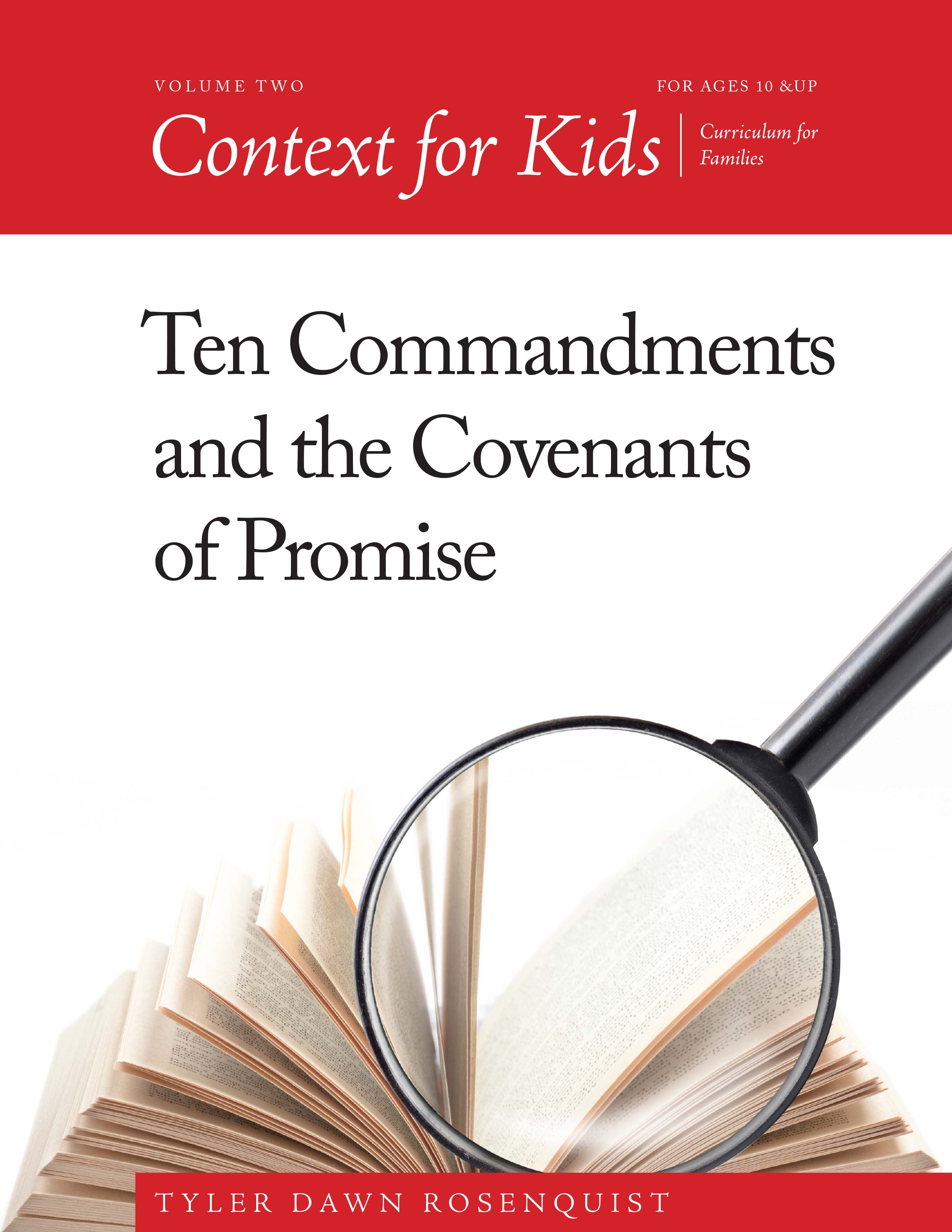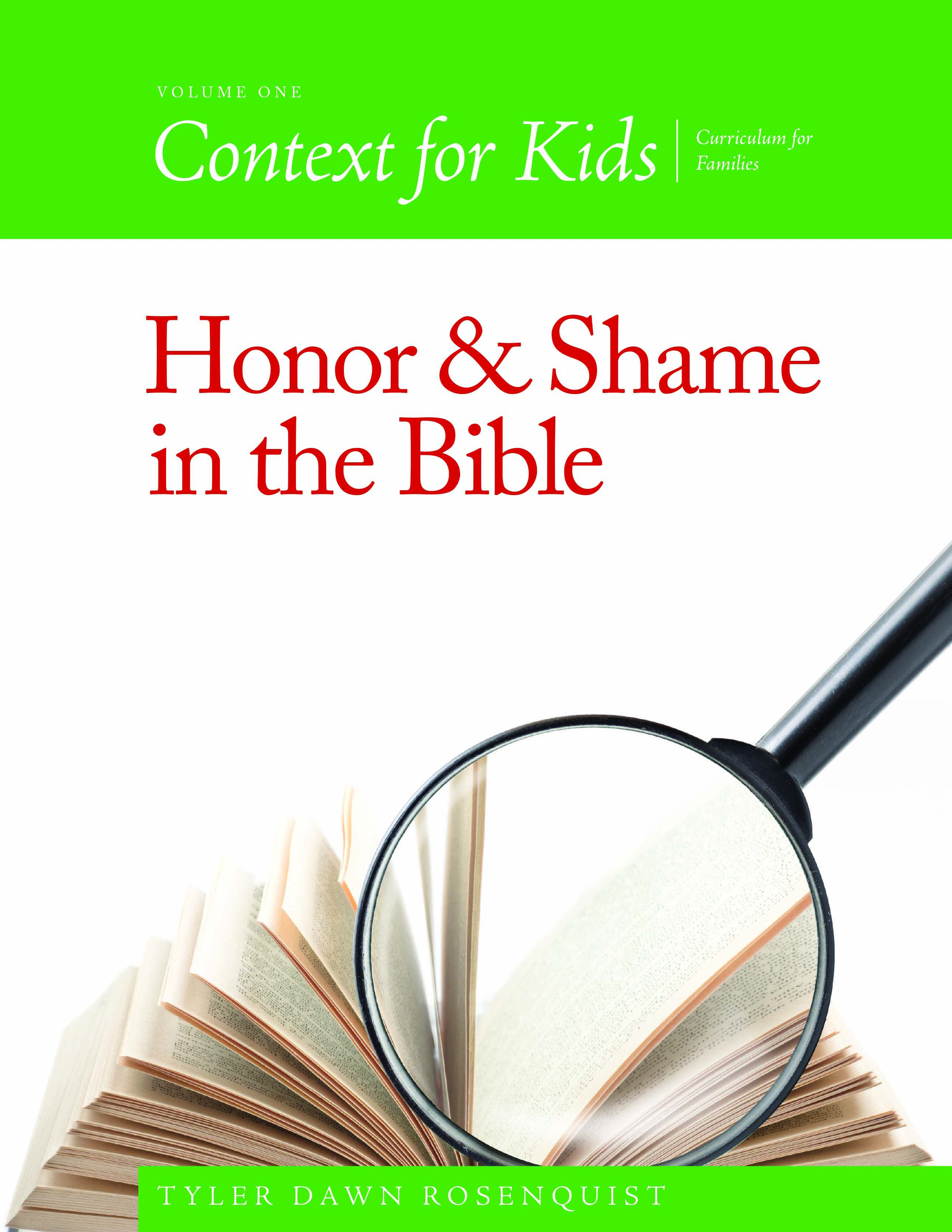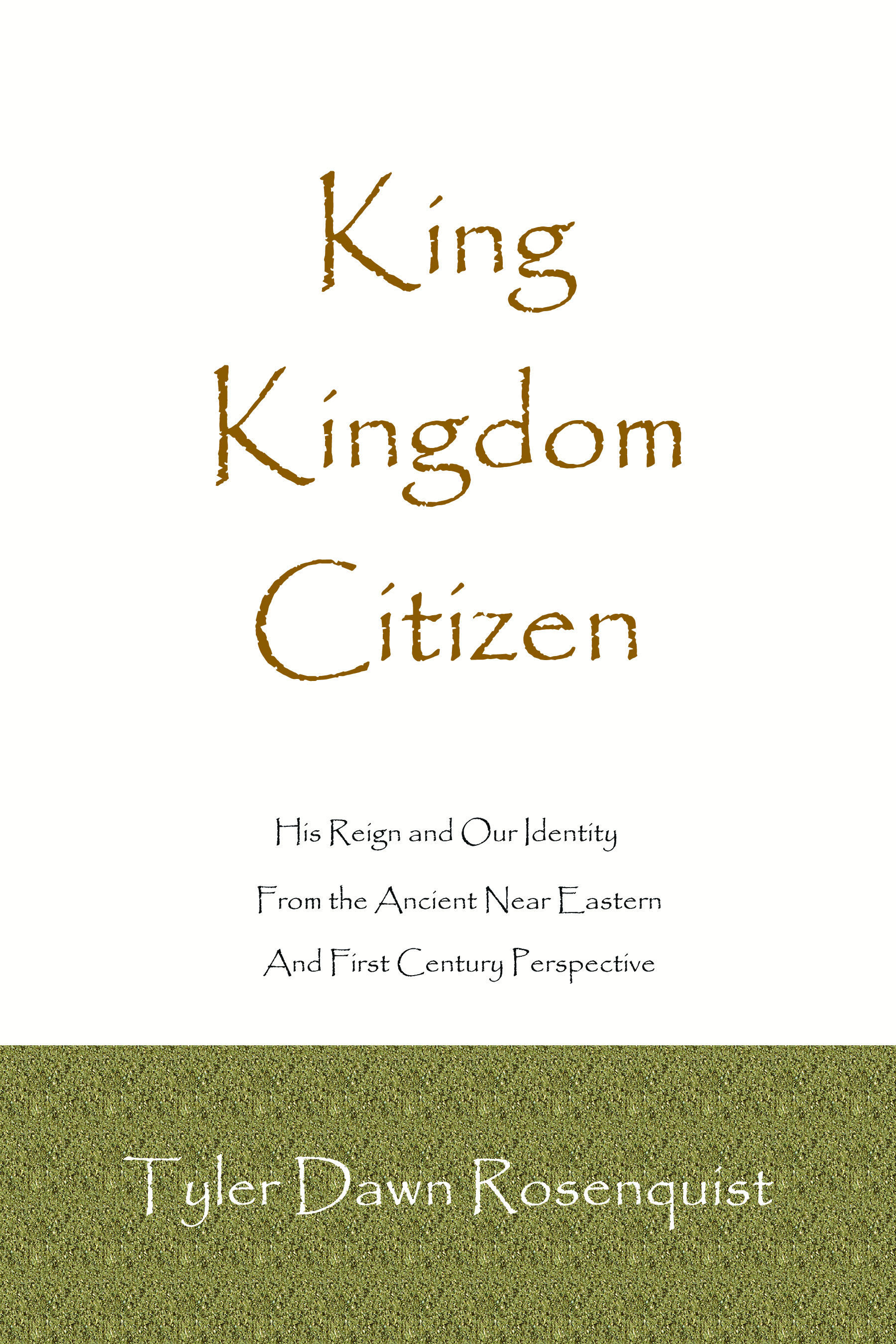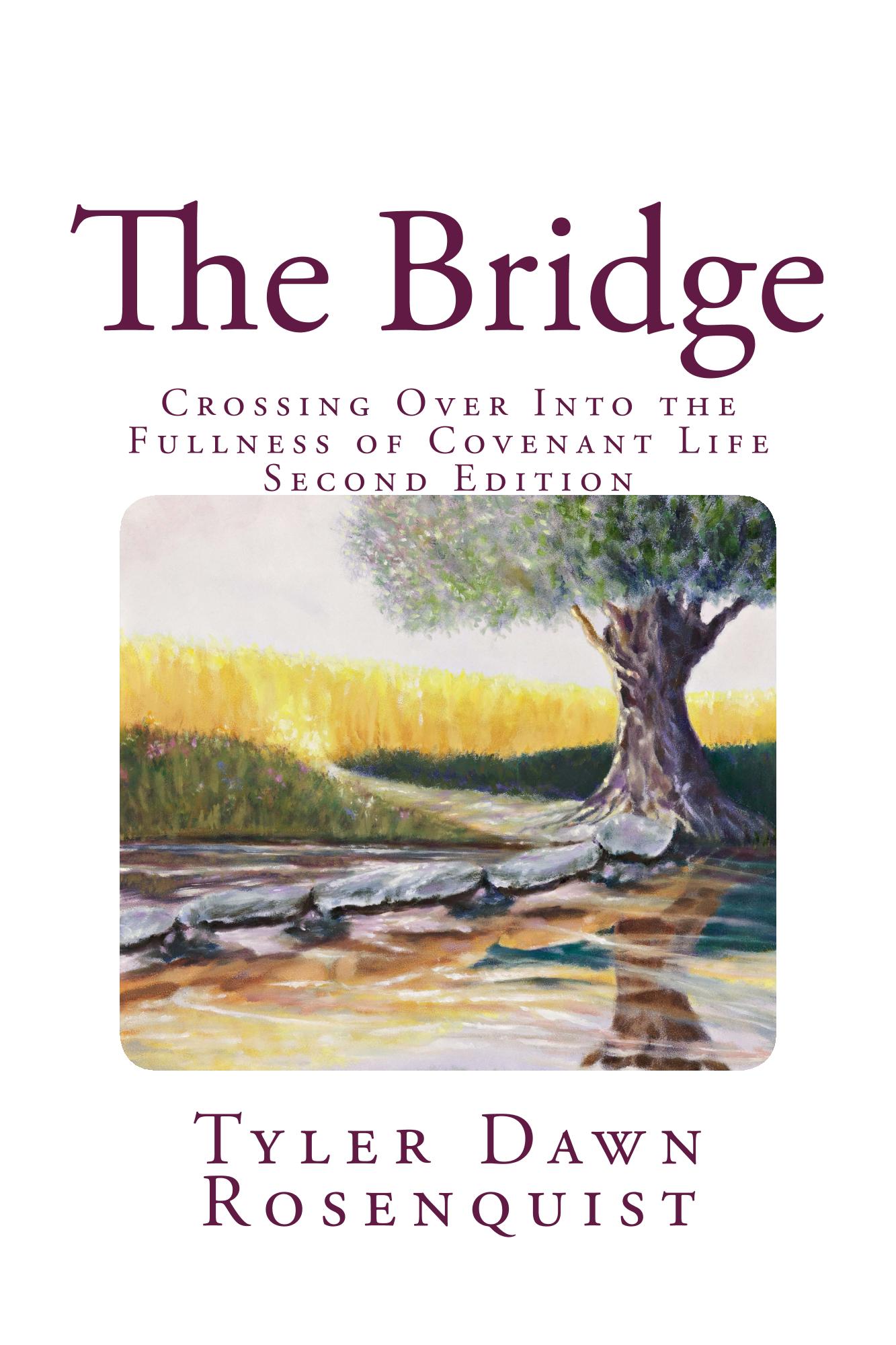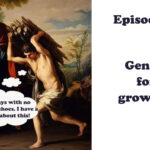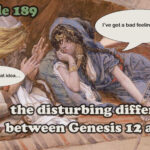Why is the Gospel of Matthew called a biography when it looks absolutely nothing like our modern biographies? What were the rules of writing an ancient life story and how did Matthew use this genre to communicate the story of the Messiah to his very unique audience at a very tumultuous time in history?
(My affiliate links for Amazon products are included in the post. As an Amazon Associate, I earn from qualifying purchases.)
Welcome to my first episode in this new series on Matthew, which I am teaching in tandem with the Psalms because they truly do go great together as will become more obvious as we get deeper in.
If you can’t see the podcast player, click here. If you prefer a longer video version, click here.
Just as we did with the Gospel of Mark, overwhelmingly believed to be the first written Gospel, we need to take some time to explore the author, what exactly they were writing, when they wrote it, and what purpose it served within the community where it originated. Mark is largely attributed to Peter’s companion John Mark, most famous for ditching Paul in Pamphylia and for being the cousin of Barnabus plus the reason for the splitting up of certainly the greatest missionary team in history. So, not likely an author that anyone would have made up, as his history is a bit sketchy. Mark was almost certainly written to a Roman audience and not a primarily Jewish audience because of his frequent usage of Latin loan words and his explanations of concepts unique to first-century Judaism that wouldn’t need explanation if the audience was Jewish. Mark was likely written sometime around 60 CE, give or take a few years. His intention was to declare Yeshua/Jesus as the fulfillment of “Jewish” prophecy in being the Yahweh-Warrior and Arm of the Lord prophesied in Deutero-Isaiah, and we covered that in a series as well–performing miracles, feedings, and healings for both Jews and Gentiles as a glimpse of the future Messianic Kingdom that was inaugurated at the Cross and Resurrection. I mention all of this because it will be important in understanding how Matthew is very different even though it uses over 90% of the material found in Mark—but adds a whole lot more and emphasizes the same material in different ways.
Hi, I am Tyler Dawn Rosenquist, and welcome to Character in Context, where I teach the historical and ancient sociological context of Scripture with an eye to developing the character of the Messiah. If you prefer written material, I have years’ worth of blogs at theancientbridge.com as well as my six books available on Amazon—including a four-volume curriculum series dedicated to teaching Scriptural context in a way that even kids can understand it, called Context for Kids (affiliate link). I also have two video channels on YouTube with free Bible teachings for adults and kids. You can find the links for those on my website. Past broadcasts of this program can be found at characterincontext.podbean.com, and transcripts for most broadcasts at theancientbridge.com. If you have kids, I also have a weekly broadcast where I teach them Bible context in a way that shows them why they can trust God and how He wants to have a relationship with them through the Messiah.
Let’s look at the author of Matthew; the earliest church tradition identifies him as the apostle Matthew, certainly one of the more obscure apostles whom we certainly wouldn’t even think twice about without this Gospel and the fact that before conversion, he was a traitor to his people, being a tax collector for the Romans. Not in terms of going to ordinary Jews and collecting taxes like the Sheriff of Nottingham, but specifically collecting tolls from merchants in places like Capernaum among those who shipped fish throughout the area. Maybe it wasn’t that Matthew at all, but Papias claimed it was, and he was born only 30 years after the Resurrection, placing him within a stone’s throw of the events. Doubting him really serves no purpose. Eusebius claimed that Matthew was originally written in Hebrew (Aramaic) and translated, but experts tend to agree that it really doesn’t read as though it was. The current “ancient” copy of Hebrew Matthew dates to like the 14th century by the Ba’al Shem Tov, and there is no reason to suspect it was the product of a scribe copying an earlier document. Scholars tend to believe that it was translated from Catalan, which was derived from a manuscript in Provencal, which was itself based upon the Latin Vulgate. The Baal Shem Tov was a polemicist against Christianity in favor of Judaism, and it was in his best interest to translate the Catalan into Hebrew. But it is a very layered manuscript, showing the telltale signs of having gone through many translations. And, of course, the originals for the Vulgate translation were in Greek. Truth be told, all of our manuscripts of “Hebrew Matthew” are dated from the 15th through 17th century, and none claim ancient roots. There are only 28 manuscripts out there. So, there is no benefit in claiming these represent the originals, and we gain nothing—although more than a few people speaking outside their field of expertise have made a lot of money doing it. Nuff said.
As for the “what,” Matthew covers the same material as did Mark but in sometimes completely different ways and to highlight a very different story. For Mark, Yeshua was the Jewish Messiah who didn’t destroy the armies of the Gentiles but instead the armies of the demonic powers and principalities oppressing both Jew and Gentile. Yeshua combatted hunger, spiritual and physical deafness and blindness, sickness, physical and mental infirmities, demonic oppression, as well as the leadership of the Temple and the regions of Judea and Galilee (which were not united as one country and had entirely different power structures and political realities). The only thing they had in common was the presence of Jews and being ruled by the Roman Empire through vassals and governors. But the culture was incredibly different, and so were the accents. Matthew, on the other hand, is clearly a Jew who never feels the need to explain Jewish concepts because his audience already knows that information. Parchment is expensive, and this is a long Gospel as it is! Matthew’s Gospel is in the form of an ancient biography, so that’s what we will be talking about today. Ancient biographers didn’t play by our rules but according to their own cultural expectations for what it meant to properly communicate the life story of an important person. A fabulous book on this is Keener’s Christobiography (affiliate link)–not light reading, let me tell you.
Matthew is presenting the story of Yeshua in a way that proves He is the (1) Second Moses, (2) heir of the Davidic throne, the “Son of David” who is ruler over the Greater Kingdom of Heaven, (3) Israel’s definitive teacher, (4) the divinely conceived Son of God, (5) the Suffering Servant of Isaiah, (6) the one who is “greater than” the Temple, Jonah, Moses, etc. because He is the unique incarnation of the Son of God, (7) the true way of Judaism, as opposed to the Pharisees and the now defunct priesthood (if this was indeed written after the destruction of the Temple) and (8) the one who gathers the Nations into faith in Yahweh. Matthew puts Yeshua on such a high pedestal that it should be no shock that his last recorded words of Yeshua are that He has been given all authority in heaven and on earth and that we all need to obey all He commanded. Yes, that would include the Sermon on the Mount!
As for the when, that’s a bit more tricky. It wasn’t likely written before Mark, and anyone studying the transmission of ancient stories knows that they get longer and not shorter with time. There were no Reader’s Digest Abridged Versions of the Gospels. Matthew is most likely longer because he took the material gathered together by Mark (from Peter—things Matthew didn’t see because he wasn’t one of the inner circle “three”) and used that as a base to tell the story that best served his own community of Jewish Christians, but also a community inclusive of Gentile Christians. But the real question that scholars grapple with is whether it was written before or after the destruction of the Temple and Jerusalem in 70 CE. There are good arguments for both, and so I am going to suggest a date after the destruction for a few reasons—but mostly because I believe the problem faced by Matthew’s community is a battle between his sect and the Pharisees for dominance of the hearts and minds of the Jewish people after the destruction of the Temple, when tempers were running high and intra-Jewish controversies and infighting were feverish, to say the least. At this point, the Sadducees were gone because without a Temple, the upper echelon of the priesthood was shattered and they were powerless. The Essenes/Qumran sectarians were always a small offshoot who mostly kept to themselves anyway and so were never very influential. The Pharisees had moved to Yavneh and other locations, setting up learning centers and trying to salvage the remains of Palestinian Judaism (Palestine being the name used by the Greeks from 500 BCE (derived from ancient Assyrian), which was used by Josephus and Philo and which was later made official during the second century by Rome—so not to be confused with referring to the modern Palestinian people).
Imagine a post-apocalyptic world (yes, I am aware I am using that word wrong, but everyone knows what I mean) where different factions are trying to shape the world around their unique way of thinking and doing things. I cannot stress enough how devastating the loss of Jerusalem and the Temple were to the Jews. Their identity was in tatters, and the future of the faith was anything but certain. It was the perfect time to make their case for who truly represented the authentic people of Israel and whose ways were more pleasing to God, whose ways would bring the nation that was so divided into sects that really hated one another with a vengeance—long before Yeshua was born—back together in worship and observance of the Torah. What did the nation need to do in order to merit the Messiah who would overthrow the Roman legions? As for the people, what do you hope for when the world is a shambles around you? Do you go with the Pharisees as they began their journey into the Rabbinic Judaism of the Middle Ages? Or do you follow the nutty believers in a crucified Rabbi who they actually believed rose from the dead? The infighting between the Jewish believers in Yeshua and the Jewish unbelievers had gotten Rome into such a state of irritation that Emperor Claudius expelled them all. Rome didn’t care for religious drama—after all, they were a “peaceful” people bringing peace and joy to all the world. *cough*
Of course, Christians made up about 20% of Jews in the Roman Empire in the first century, which is a lot. However, that left 80% who weren’t, and the Pharisees won both the day and the overall battle even to modern times. In addition to the Jews killed in the Temple revolt, about half as many were recorded as killed in 135 CE at the end of the Bar Kochba Revolt. Some estimates have the number of dead at as much as 1.7 million in all. I don’t think it was anywhere near that high, but I also don’t want to have anything to do with counting such things. The decrease in population is just staggering. People were desperate—how do you please God without a Temple in the ancient world? The Pharisees promoted Torah learning, prayer, and charity as equivalent to Temple observances. The Christians, on the other hand, promoted allegiance to a crucified Messiah. Let’s just say it was a hard sell in an honor/shame society.
And so, it would have been a time of polemics between Jews who did and did not ally themselves with Yeshua. It is no different than we see in ancient schools of Philosophy among the Greeks and Romans. Teachers would gather disciples, lay out standards of moral living through stories and proverbs, and do verbal battle against rival teachers to grow their own school and decrease the following and honor of other teachers and schools. Really, the Rabbi/disciple model we see within first century Judaism was very much inspired by the Greek model. Apart from all the shameful polemical name-calling (a lot of it would make you blush, I promise), it really was an effective system. If the Greeks and Romans were good at anything, it was organization and administration. The Jews actually benefitted greatly from it in some ways and not so much in others.
What do you do when two factions are battling for the hearts and minds of their own people? You promote your teacher, promote their teachings, promote their teaching abilities, promote their authority in all things pertaining to virtue and wisdom, lay out the way of life advocated by that teacher, increase their honor, and decry the other schools of thought. This was the way of the ancient world, including the Jewish world. It was how things were done. It was how John the Baptist did things and how Yeshua did things—not because it represents an ideal form of communication but because it was understood. We look back, and we base our political conversation on it—I mean, Thomas Jefferson’s campaign called John Adams a hermaphrodite. Like, dang. So harsh.
And so, Matthew wrote an ancient biography of Yeshua, doing all that and more. Now, biographies in the ancient world weren’t like the biographies out there today, which are often written about people who are still alive or recently died. In fact, that’s what makes Yeshua’s biography strange. Ancient Historians generally wrote about people long dead, who no one alive had ever had contact with. Easier and safer that way! Their biographies played fast and loose with the historical facts in order to tell a story about the person in question—but you shouldn’t mistake that for ancient biographies qualifying as fiction. People expected a story and not just boring facts and figures. Biographies, then and now, are always an act of interpreting someone else’s life. We don’t know what really happened behind closed doors or who said what and how it was said without it being recorded. And even if it is recorded, the different people in the room will have different vantage points and might perceive the same situation differently. And, in their own way, they might all be correct.
A lot of people get their panties into a bunch when multiple Gospels describe the same exact story in different ways—with a different number of people or changing the circumstances a bit. But that was not only normal but expected in the ancient world. There is no chance in heck that the Gospel writers would divert from the other accounts if there was even remotely a chance that they would be perceived to be untrustworthy. And notice that Rabbinic writings have zero problems with how the Gospels were written—because they did things the exact same way. All the ancient world wrote these types of texts with just enough creative license to tell the truth—which is sometimes easier if you aren’t bogged down with a need for scientific-level accuracy. Accuracy being important is part of our culture because of the Age of Enlightenment and the scientific revolution. And believe me, when you are combining chemicals, accuracy is absolutely important. I know this personally as a chemist. But for Mark to show Yeshua as a warrior, and for Matthew to show Yeshua as the greater Moses, and for Luke to write “an orderly account” of the life and ministry of Yeshua and for John to be utterly esoteric, they had to emphasize some aspects of the story and ignore others that didn’t contribute to that particular facet of the diamond. If I were to tell the story of my own life, I would first decide what I wanted to emphasize and then pick and choose material and decide how to present it to make my point. Otherwise, history is super boring for most people.
And remember, they didn’t consider this to be fiction. From Genesis through Revelation and from narratives to poetry to wisdom literature to biographies to letters to apocalyptic literature, God entered into our world through the inspiration of the Holy Spirit in speaking to Israel; He did it through the various writers during their different historical periods and according to the literary constructs of the time (after all, how could they understand Him with no common ground for reference?), languages, legends, and understandings of things like science. Peter Enns calls this Incarnational Biblical Authority (affiliate link)—in that Yahweh inhabited our lives first and foremost through communicating with humans on their terms in ways they could understand. In the same way, Matthew presents Yeshua as God doing the exact same thing in entering the world in flesh (and specifically in the flesh of a Jewish male who was descended physically from a son of David and was adopted into the royal Davidic line). As such, He was perfectly situated to communicate to the very audience He would send out into the world. At the age of thirty, given the high death rate in Judea and Galilee, at thirty years of age, Yeshua was an elder in the community—giving Him voice and a measure of honor. He was a male, which meant that people in that culture would listen to Him. He spoke like a Biblical scholar, worked miracles, and performed exorcisms—which the people of that time and place were primed to see as proof of the legitimacy of His ministry. Both Jew and Gentile, actually. He was brilliant in verbal confrontations, a must in that culture. Were Yeshua to appear today, He would appear in somewhat different ways while saying the same thing with different words, but how different is anyone’s guess. Whatever form He would take would be based upon common modern shared experience and values. Yahweh enters into our world to communicate with us, and thank God He does not communicate with us according to where He is. What a nightmare that would be when we are less than toddlers compared to Him.
And this is where we need to understand that the stories about Yeshua weren’t taken down by a scribe following Him around. In the ancient world, oral accounts were believed to be superior to written because (1) oral accounts could be expounded upon in a superior fashion to written notes, (2) they understood that tone is every bit as important as words, and (3) not much was really written down because it was largely impractical and literacy rates were extremely low until just recently. This means the Gospels were oral accounts until after the time of Paul and his letters. It was only when the Church had spread out so far and wide that certain people took to compiling the accounts of Yeshua that were being taught in the synagogues, private homes, open-air gatherings, and rented halls. These accounts were then copied for nearby congregations, and the best of them survived in the forms of the three synoptics plus John. As heresies began especially creeping into the ever-expanding Church, there was a need for formal accounts based on apostolic witness or at least those who were the safe keepers of the memories of the Apostles, many of whom were dead or elderly by the time the accounts were actually formally written down. The business of the Church, of course, was to preach the Gospel to the ends of the earth in anticipation of the return of Christ. Likely, they originally believed (as it is clear that Paul and many others did) that the return would be very soon. In fact, every generation has looked at the Scriptures and believed the exact same thing. So, the need for written accounts that could be disseminated and largely controlled didn’t exist in the beginning—as we should expect and respect in an oral culture where everyone had terrific memories but very few could read. We are the opposite and have books so we don’t have to memorize everything.
Next time, I think we will focus on Matthew’s love of the phrase “the Kingdom of Heaven” and what it meant to Him and the story He wanted to tell about the Messiah to his largely Jewish, post-Temple audience and how and if it differs from Mark and Luke’s “Kingdom of God.”
